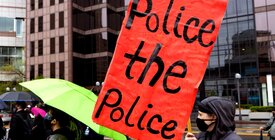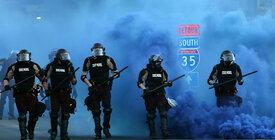Introduction
Public safety has long been treated as the near-exclusive province of law enforcement agencies. This is unsurprising given that police are tasked with countless challenging and sometimes dangerous duties, including responding to active crime scenes and 911 calls for service that are made all the more unpredictable by the prevalence of gun violence in the United States. But for decades, police have also served as the default first responders for issues well beyond those directly related to safety, ranging from noise complaints to concerns involving addiction and poverty.
Today, however, there is growing scrutiny over law enforcement responses to certain situations — particularly mental and behavioral health crises and minor traffic violations — and the racially disparate outcomes that are frequently seen. High-profile police killings of Black men, such as Daniel Prude amid a mental health crisis, have led many members of the public to question why such cases are not treated primarily as medical emergencies. Similarly, fatal police shootings following routine traffic stops — such as that of Walter Scott, who was initially pulled over for a broken taillight — have raised concerns about law enforcement’s broad discretion to use force. These instances, compounded by the murder of George Floyd in 2020 and other incidents of deadly force, have fueled public debate about whether police are the officials best poised to address issues that do not concern public safety.
To mitigate the risk of harm in such circumstances, many municipalities have tasked unarmed, non–law enforcement responders to address nonviolent social and medical issues, such as mental health crises, or narrowed the scope of police discretion and duties in traffic enforcement. This analysis documents which of the 50 U.S. jurisdictions with the largest law enforcement agencies (hereafter referred to as “the top 50”) enacted such reforms between January 2020 and July 2022.








